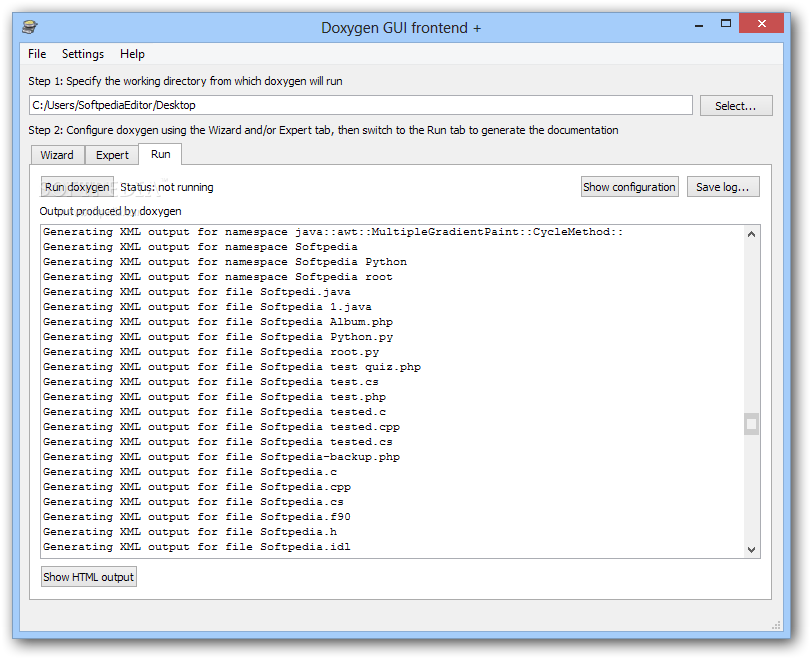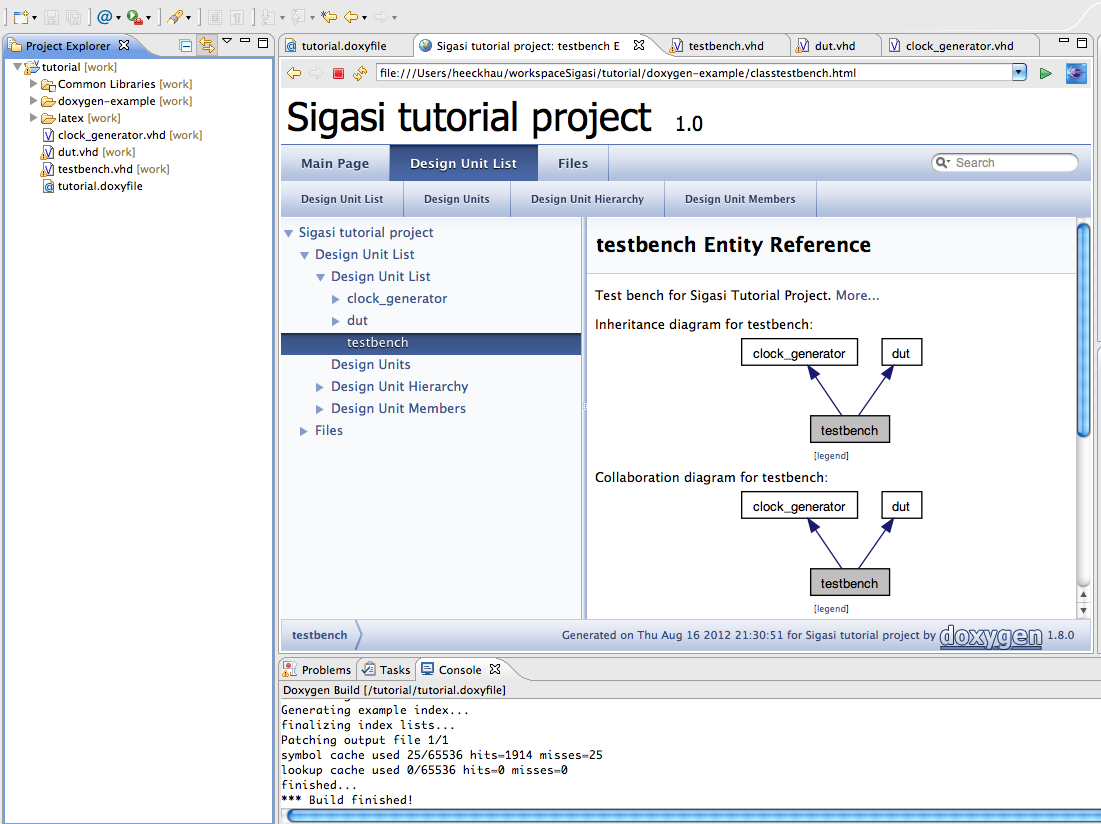

- #Doxygen plugin visual studio generator
- #Doxygen plugin visual studio pro
- #Doxygen plugin visual studio code
- #Doxygen plugin visual studio plus
In this situation, you can create custom edge to represent missing relationship. Some function call relationship can't be detected because of limited capability of doxygen. Input your comment for functions/classes/variables in Symbol panel. Press Alt+Num to show relationship graph listed at the bottom left corner. Press Ctrl+Num to add selected edge to a relationship graph.
#Doxygen plugin visual studio code
Then move to code position and press Alt+U again to show the actual function.

Press Alt+M several times to see more members. Press Alt+M to find one class variable and the largest member function. Press Alt+O to find overloaded functions. In these cases, place the cursor on those callees and press Alt+H, then they will be added to Code Graph. Some callees may not be found by pressing Alt+V. Press Alt+V to find callees / files including this file / used variables. Press Alt+C to find callers / included files / functions using the variable. Press Alt+J/K/L/I in Visual Studio Text Editor to jump to neighbour items.įind Callers/Callees/Variable Usage/Include Files Move cursor onto function/class/variable name in Visual Studio Text Editor, then press Alt+F to show it on Code Graph. Mouseĭrag using right mouse button to move the view. In the image, it's line 50 in the file "PatternDetector.h".Ĭolors for edges represent different graphs, whose name and key short-cut can be seen at the bottom-left corner. OverviewĬolors for these shapes represent different classes, whose name can be seen at the top-left corner.Ī "book mark label" is a code position. The video explains all main usages, especially the empty viewport problem reported by many users.
#Doxygen plugin visual studio pro
I'd also suggest you look at my add-in, Atomineer Pro Documentation, which makes the generation and updating of DocXml, Doxygen, Qt or JavaDoc format comments much faster and easier within VS - an ideal complement to both Doxygen and Sandcastle.Code Graph is a code visualization tool for Visual Studio 2012-2017 and allows one to explore the code conveniently. I would recommend starting with DocXml comments and Doxygen to generate the external help, as that's the cheapest and easiest way to get started, and retains all the best features of VIsual Studio (intellisense etc).
#Doxygen plugin visual studio plus
On the plus side, Doxygen does parse the DocXml format, so you can get the best of both worlds by using the DocXml format with Doxygen to generate the external help.Ĭommercial products like DocumentX, which allow you to edit the documentation in a WYSIWYG window. This is easier to use and more flexible, but not supported by Visual Studio, so you lose the intellisense and syntax colouring advantages. The advantage of this is that Visual Studio recognises the documentation (it syntax-colours the comments) and the documentation is instantly picked up by the Intellisense system (so if you hover your mouse pointer over a method you are calling, the tooltip will display the summary and parameter information that you entered in the Doc Comment) Use DocXml documentation comments, and then Sandcastle or a similar tool to build MSDN-style documentation. There are several options for documentation: NET developers (with Sandcastle and Sandcastle Help FileBuilder). You can generate documentation in the standard Doxygen layout your organization is familiar with (becauses Doxygen supports XML comments) plus you have the option to generate documentation in a format known to. To sum up: I would recommend to use XML comments over special Doxygen comments for C# code.


If you want to use Doxygen, this is no problem as it supports parsing XML comments.
#Doxygen plugin visual studio generator
You can configure Visual Studio to generate an XML file from all the comments, which would then be fed into a documentation generator like Sandcastle. To document a method, just type three slashes ( ///) in front of the method body, and Visual Studio will insert an empty comment template for you to fill, like so: /// In my opinion this is the best way to go for C# code because support for this is already integrated in Visual Studio (comment tag auto completion, warning about missing or incorrectly spelled parameters. The default way of documenting C# code in Visual Studio is by XML documentation comments.


 0 kommentar(er)
0 kommentar(er)
